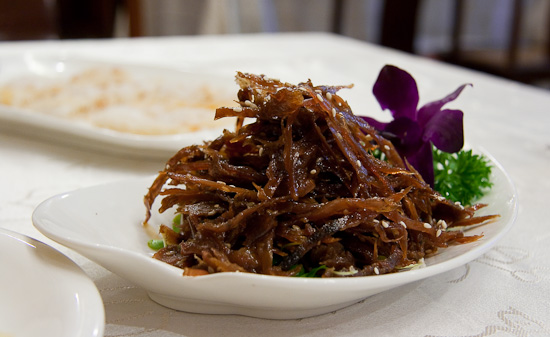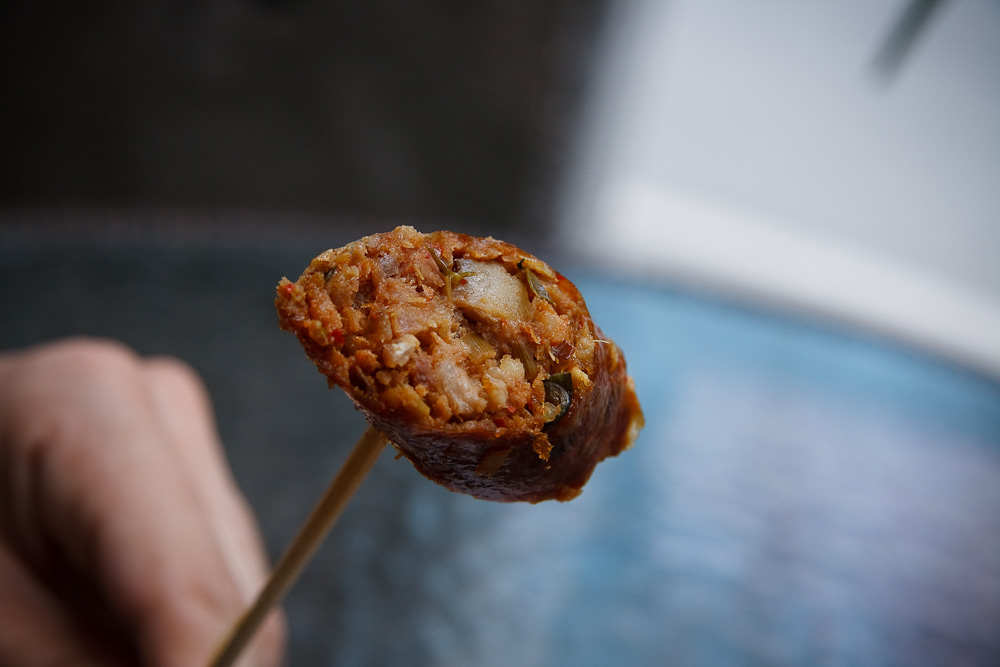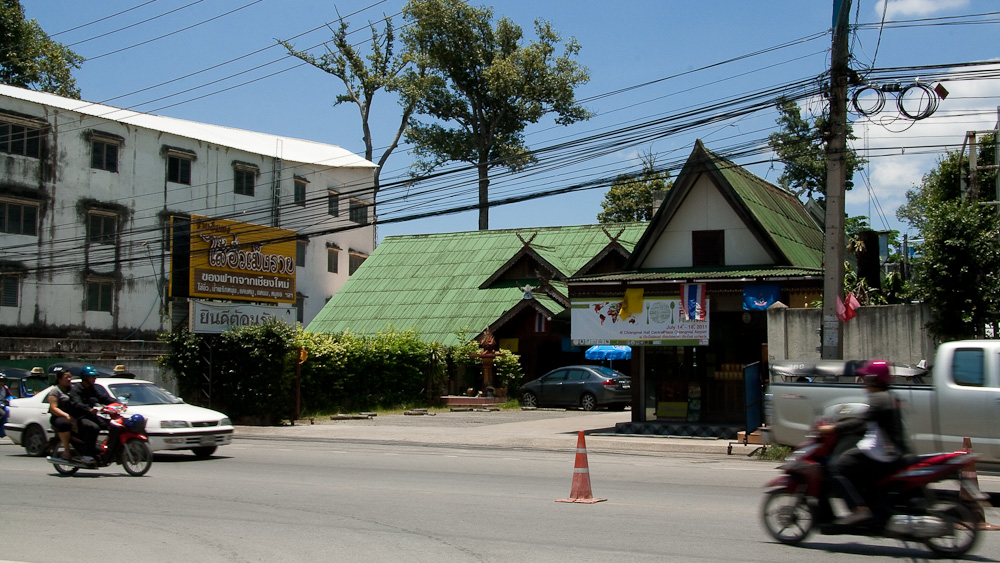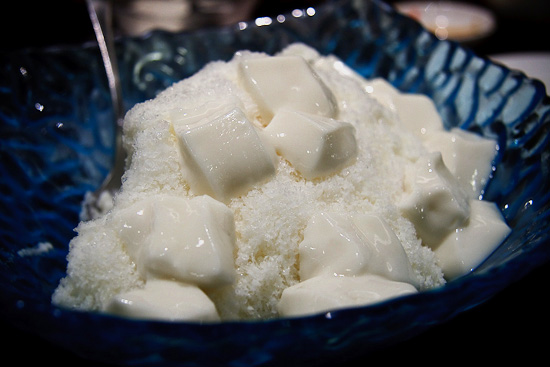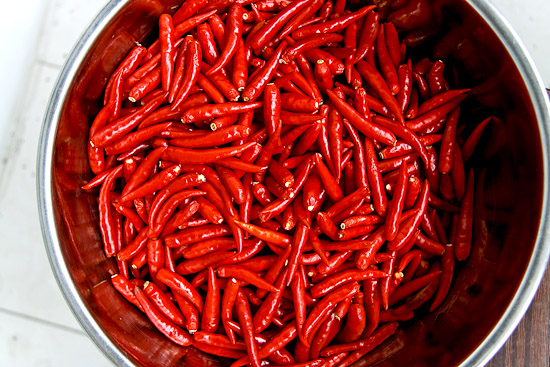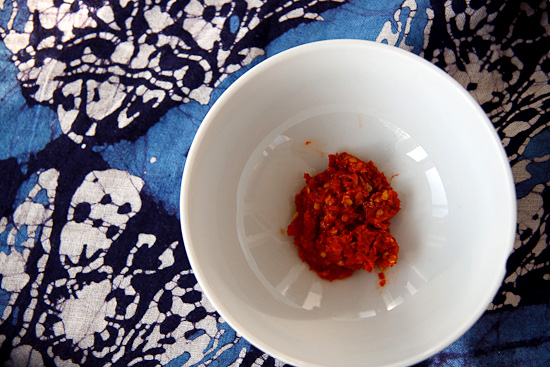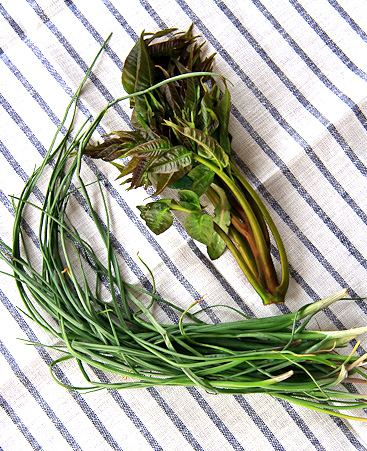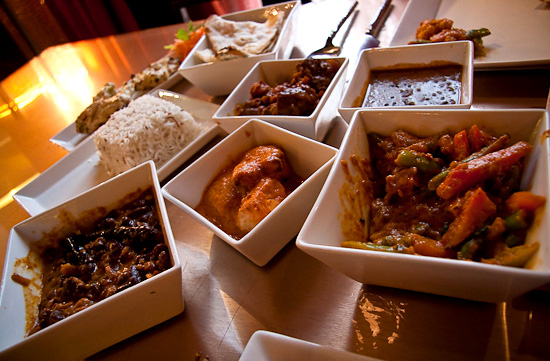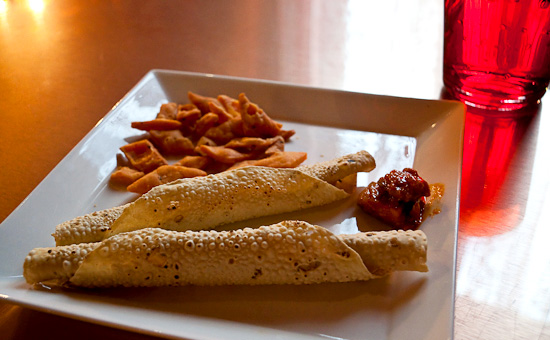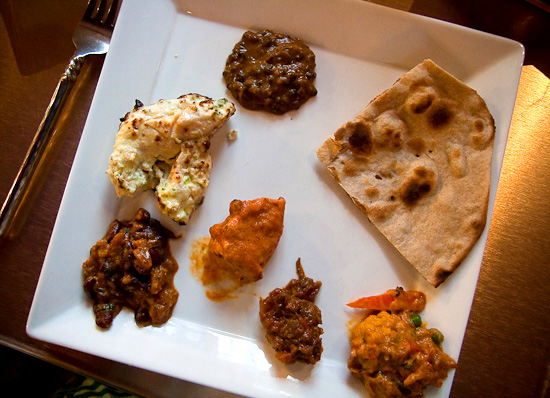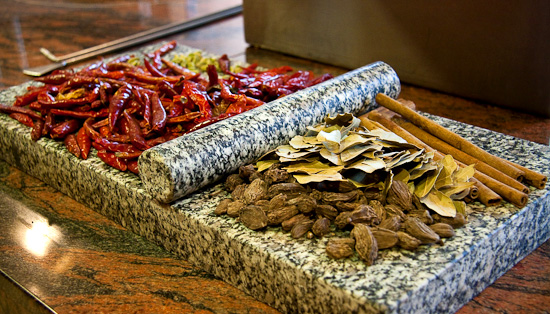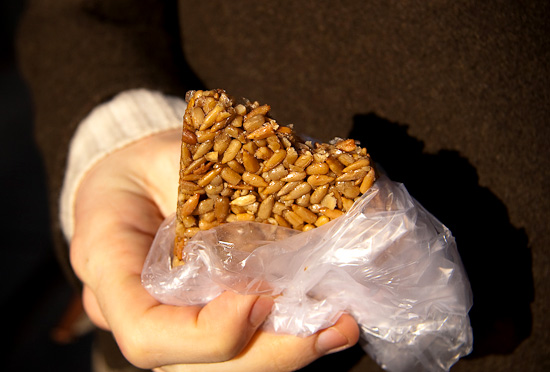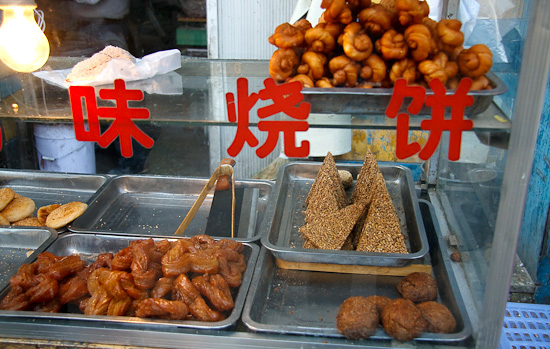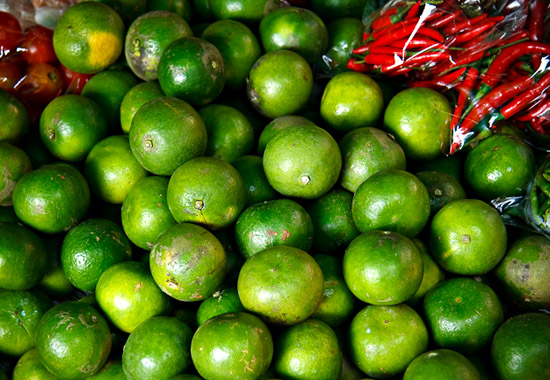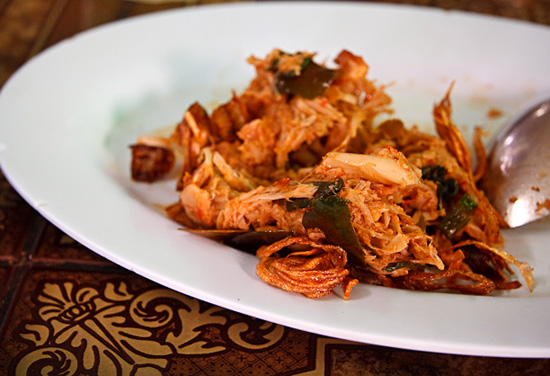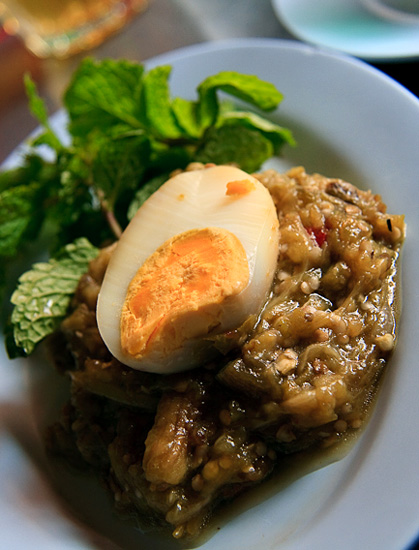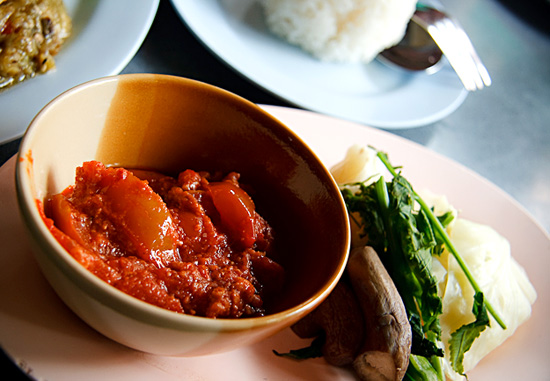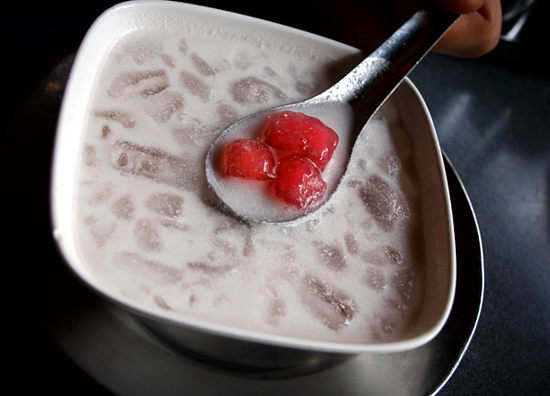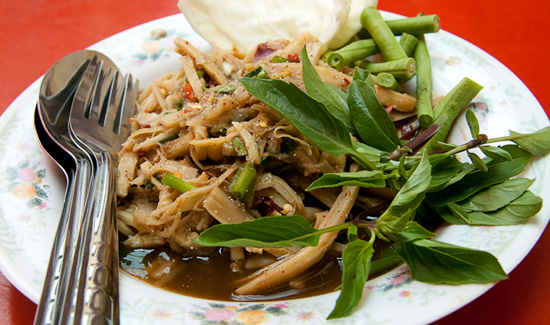Thailand had never been very high on my list of places to visit: it’s taken me nearly five years of living in China to make the relatively short trip. And now I see that I have been terribly wrong – as soon as my plane landed in Beijing and the last Kop khun ka of the Thai Airways flight attendants faded in my ears, I was already missing Thailand, and thinking of all the things I would do on my next visit.
We divided our time between Ko Lanta, in Krabi province, where I rediscovered what rain was like again, and Chiang Mai. Friends who return year after year to this northern city had already told us much about the delicious food here. But I wasn’t expecting was that I would fall so hard for the Thai chilli peppers, and such simple things as … sausage.
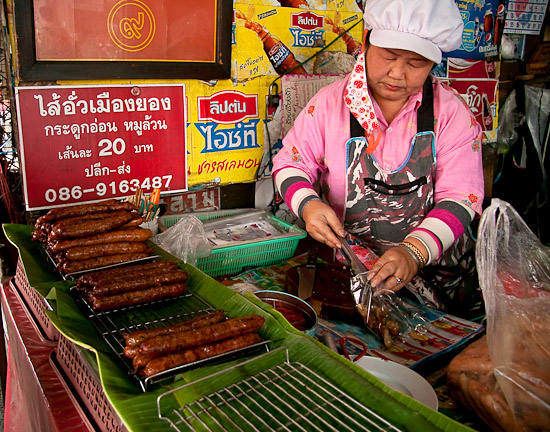
At the Somphet Market
Usually the voice of moderation to Beijing’s Chili Pepper King, I found myself going after one sharp, burning pepper after another: green or red, pickled, roasted, or fresh. I find Thai peppers to burn hotter yet more pleasantly than their Chinese cousins. It’s a very enjoyable kind of pain that clears your mind even as your mouth is all a-tingle. A lucid fire.
Chiang Mai’s porky ways also turned my head, even though I rarely eat meat in my everyday meals in Beijing. Perhaps that’s because it really makes a difference to have quality meat, prepared with attention to detail and good spices?
From tender, fall-apart pork belly in a sweet, sour, spicy curry of tamarind, peanuts, and turmeric (kaeng hang lae), to grilled pork from the Sunday walking market, with an outstanding green chilli dip, every meal was a revelation for me one way or another?
Most astounding of all was my first bite in Chiang Mai: That first morning, we had staggered out of our hotel without breakfast, and walked across the old city. Eventually, we found ourselves standing outside of Wat Chiang Man, wanting to go in but aware of our growling bellies. Fortunately, just across the street was a young woman who had just gotten her grill started: she had bananas, rice wrapped in banana leaves, what looked to be chicken, and dark lengths of sausage. In a few seconds, half a sausage was ours for 5 baht.
And this was the most amazing sausage I had ever eaten. Fresh off the grill, the sausage brought together an intense melange of flavors – lemongrass, kaffir lime, chili peppers and more that I can’t name. I had never known that sausages could taste like this, better than any Nürnberg Rostbratwurst or limp and pasty Weißwurst.
We devotedly sampled other examples of sai ua, or northern Thai sausage, during our time in Chiang Mai: some were just okay, too lightly spiced, and some were really quite good. But none matched that glory of the first sausage (or could our desperate hunger have colored our enjoyment?).
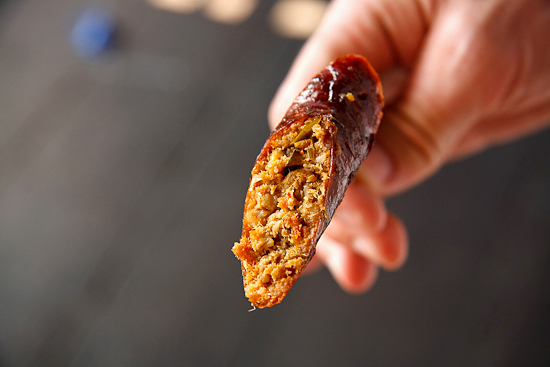
Sai ua from the Somphet Market
This sausage was purchased from the woman (first picture) just around the corner from the Somphet Market, on the corner of Moon Mueang Rd and its Soi 6. It was good and spicy, with a crisp skin, but it was slightly too firm, and I missed the in-your-face bits of lemongrass that had made the first sausage so distinctive.
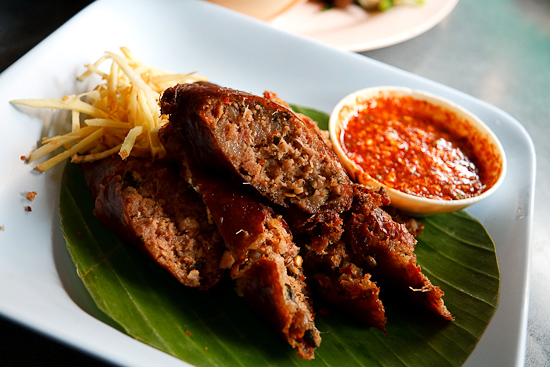
Northern-style sausage, with shredded ginger, at Huen Phen
The sai ua at Huen Phen, one of my favorite restaurants in Chiang Mai (more on that later), was even more delicious, so generously stuffed with herbs that the sausage slices were starting to fall apart. With the slivers of ginger, red chili dip, and a knob of sticky rice, this was a perfect meal.
Since then, I’ve read about more excellent examples of sausages at Warorot Market and on Chang Klan, and even other types and varieties of sausage. I know what’s in store: more trips to Chiang Mai so that I can undertake a full study of sai ua and all its pork-related wonders.

